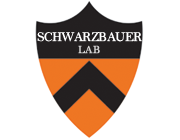Easy and efficient bonding of biomolecules to an oxide surface of silicon.
Type
A new method is described to attach biological molecules to the surface of silicon. Semiconductors such as Si modified with surface-bound capture molecules have enormous potential for use in biosensors for which an ideal detection platform should be inexpensive, recognize targets rapidly with high sensitivity and specificity, and possess superior stability. In this process, a self-assembled film of an organophosphonic acid is bonded to the native or synthesized oxide-coated Si surface as a film of the correspondingphosphonate. The phosphonate film is functionalized to enable covalently coupling biological molecules, ranging in size from small peptides to large multi-subunit proteins, to the Si surface. Surface modification and biomolecule coupling procedures are easily accomplished: all reactions can proceed in air, and most take place under ambient conditions. The biomolecule-modified surfaces are stable under physiological conditions, are selective for adhesion of specific cells types, and are reusable.

